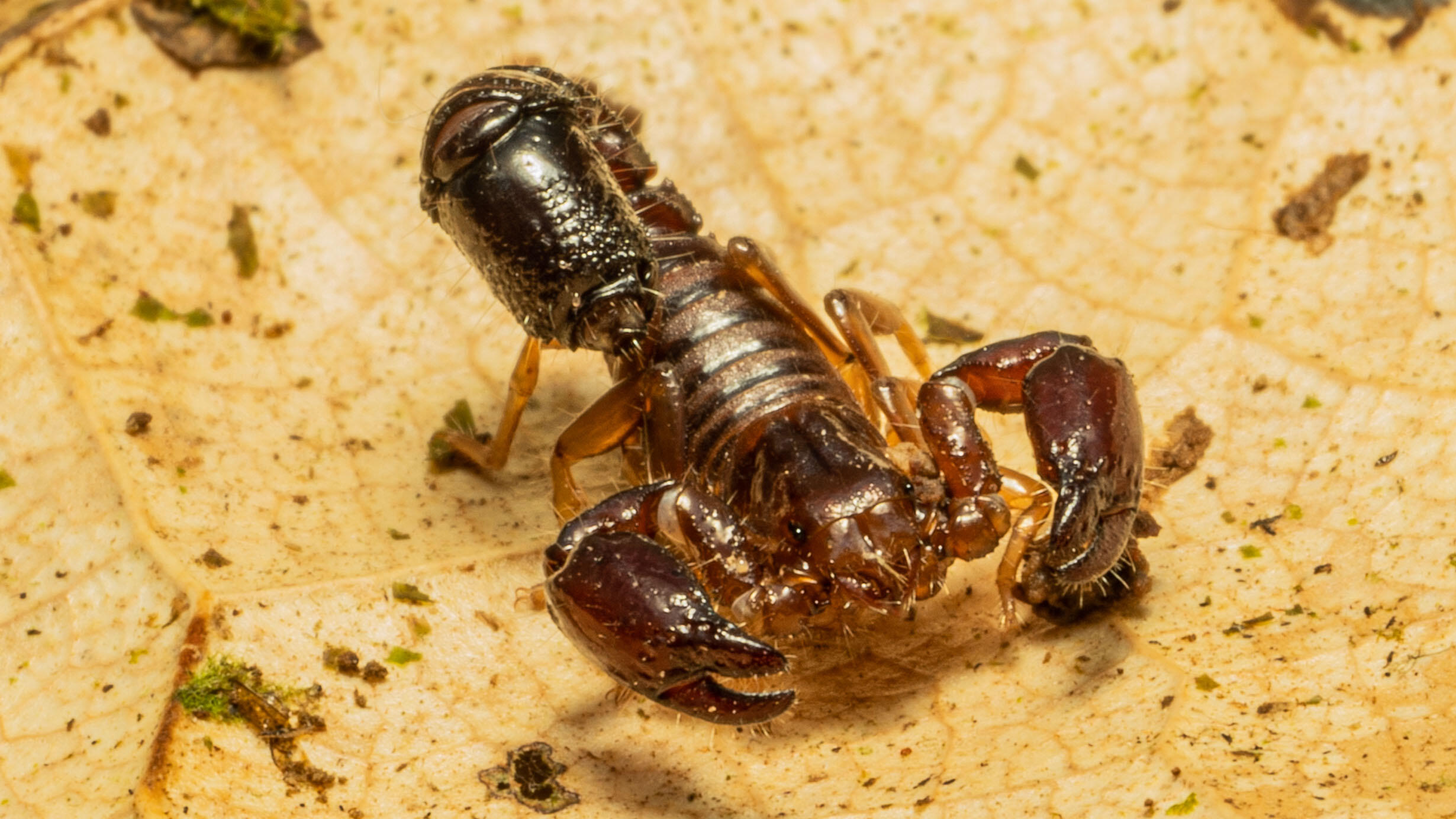Researchers Discover Partially Blind Scorpion in Amazon Rainforest Leaflitter
by AMNH on
by AMNH on
 The newly named species Troglotayosicus akaido from the leaflitter of the Colombian Amazon rainforest.
The newly named species Troglotayosicus akaido from the leaflitter of the Colombian Amazon rainforest.Many scorpions that live in the constant darkness of caves have an adaptation known as troglomorphism—they lack a pair of eyes in the middle of the carapace, known as median eyes, that are common in most other scorpions, which also have one to five lateral eyes on their sides.
But researchers were surprised when, digging in leaflitter in the Amazon rainforest far from any cave, they discovered something unusual: a new troglomorphic scorpion species.
“This species is almost blind,” said Museum Postdoctoral Researcher Jairo Moreno-González, the lead author of the study, coauthored with Museum Curator of Arachnology Lorenzo Prendini. “Loss of eyes is common among scorpions living in caves, but it’s unusual for blindness to have evolved in other habitats.”
In 2022, one of the paper’s coauthors and Moreno-González’s Colombian colleague, David Luna-Sarmiento, discovered the scorpions among rainforest leaflitter in the Putumayo River basin, a remote area of the Colombian Amazon, near the border with Peru, during a binational expedition conducted by the Colombian Amazonian Scientific Research Institute (SINCHI) and the Peruvian government.
The new species was named Troglotayosicus akaido: “akaido” meaning “scorpion” in the Huitoto Murui language, spoken by the local indigenous community.
The new scorpion species also has a powerful sting: Luna-Sarmiento was stung while collecting the holotype and reported “intense pain” for 30 minutes afterward.
The discovery increases the number of species in the genus Troglotayosicus to seven. It is the easternmost record of the genus and further extends its distribution into the Amazon—the other six species occur at different altitudes in the Andes foothills.
“Troglotayosicus is among the most enigmatic scorpion genera in the Neotropics, due to its troglomorphism and rarity in biological collections,” said Moreno-González.
In addition to describing the new species, which was published today in the American Museum Novitates, the researchers present the first evolutionary tree for the seven species of Troglotayosicus. The authors say that further research, is needed to understand the full story behind the evolution of blindness in this mysterious group of scorpions.